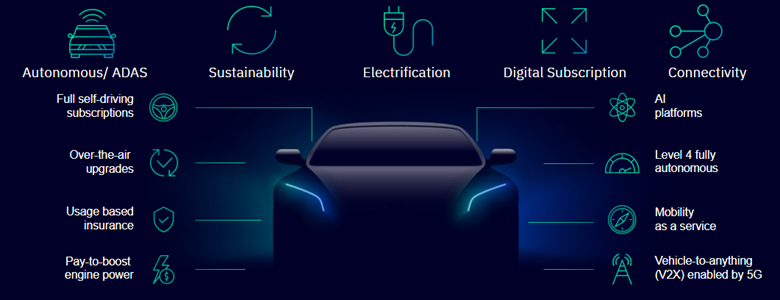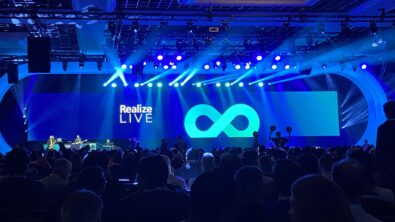Announcing the development of Capital software integration with IBM for E/E systems and software development

Siemens Capital software integration with IBM will connect IBM Engineering System Design Rhapsody for systems engineering with solutions from the Siemens Xcelerator portfolio of software and services including Siemens’ Teamcenter® software for Product Lifecycle Management (PLM) and Capital™ software for electrical/electronic (E/E) systems development and software implementation.

IBM and Siemens recently announced a collaboration to develop a combined software solution integrating their respective offerings for systems engineering, service lifecycle management and asset management. This new solution is expected to support traceability and sustainable product development through multiple domains including mechanical, electronics, electrical and software engineering.
This is only the most recent of a decades-long relationship between IBM and Siemens working together to develop solutions with integration between their respective offerings. Initially, the companies are working to connect IBM Engineering System Design Rhapsody for systems engineering with solutions from the Siemens Xcelerator portfolio of software and services including Siemens’ Teamcenter software for PLM and Capital software for E/E systems development and software implementation. The companies have also connected the IBM Maximo Application Suite for asset management with Siemens’ Teamcenter software to support an integrated digital thread between service engineering, asset management and services execution.
With this latest partnership comes a three-fold opportunity within Capital which can help customers connecting vertical design layers and engineering disciplines from requirements on system level to engineering designs on component level. Horizontally, it helps from design stage to verification and validation. With Capital Software Developer with IBM Rhapsody, customers start their software-intensive product journey integrated and stay integrated all the way throughout the product lifecycle.
In this post, I will explore:
- Multi-domain system architecture design within the new system
- Software architecture definition
- Software implementation
While I will mainly focus on the solution based on automotive, this solution is for all industries. For automotive, the Rhapsody systems and software solution can expand out of E/E system design deployments, network deployments and out of embedded deployments. For aerospace, defense, and other industries, it can expand out of E/E systems and network deployments.

The demands of the automotive marketplace continue to be drivers of innovation <fig 1>. They include:
- Advanced Driver Assistance Systems (ADAS) and Autonomous Driving
- Sustainability
- Electrification
- Feature or Function Subscription models, enabling the in-vehicle features to be upgraded after sales, by over the air updates
- Connectivity from within and to the vehicle, with own mobile devices or by features made available by the vehicle itself
All these challenges not only lead to an increase of software within a vehicle but also increase the functional complexity that the software needs to handle.

Going left to right <fig. 2>, architecture seems to get simplified, with the grey boxes representing ECUs and the movement over time from traditional to zonal architecture, but this is deceptive. For software, things get more complicated when consolidating more functionality on fewer controllers.
Maintaining performance, timing needs and staying within network bandwidth budgets get more difficult for the software defined vehicle (SDV), where more software content gets added after car delivery to customer over the whole vehicle lifecycle.
Mitigating the risks that will be encountered in modern engineering processes requires an actionable digital thread connecting all engineering domains. One of the key problems is disconnected engineering processes across design layers and lifecycle stages.
For software, this pertains to gaps between text requirements, system and E/E architecture, software architecture, and software component implementation. Horizontally, it’s all about connecting design to testing and left-shifting virtual integration. As mentioned, in the new solution, all layers are connected across design domains and hierarchies and across engineering lifecycle phases.
1. Capital Software Developer with IBM Rhapsody – SysML
Multidomain system architecture design with Capital Software Developer with IBM Rhapsody creates correct and complete stakeholder requirements by using SysML models. The new comprehensive suite of integrated engineering software is SysML v1 standards-based and drives software and E/E platform design with reusable functional models. SysML supports the specification, analysis, design and validation of a broad range of systems and systems-of-systems.
We’re also jointly developing a SysML v2 based solution with an associated migration path for customers to transition to the next generation Systems Engineering solutions. This are designed to facilitate the reuse of systems models and associated data with standards-based solutions in an open ecosystem and equip customers to develop new products faster and at less cost with lower risk and more sustainably.
Customers should also benefit from a generative and repeatable transition into the software engineering domain. The generative step transforms SysML into an initial AUTOSAR software architecture. Generative design will be a key enabler for new and established automotive companies as they develop next-generation vehicle platforms. The ability to generate electrical system architectures automatically enables teams to manage complexity and perform early design exploration and optimization. Additionally, generative design creates a singular source of data that promotes consistency between domains, design reuse, and enhances the analysis of change impact.
2. Capital Software Developer with IBM Rhapsody – AUTOSAR Architecture
Capital Software Developer with IBM Rhapsody facilitates design across multiple standards including AUTOSAR Classic, AUTOSAR Adaptive and in-house platforms. To improve accuracy, customers can produce reusable models from generated AUTOSAR architecture and embellish port, interfaces, data types and mappings and internal behavior. The solution can eliminate rework by generating correct by construction AUTOSAR models, ARXML representations and code APIs and ensure standard compliance by generating AUTOSAR models right from the architecture. Reduce time to market by automating the creation of code contracts.
3. Capital Software Developer with IBM Rhapsody – Flexible Implementation
The new solution is flexible and allows for the use of Unified Modeling Language (UML) to implement AUTOSAR and non-AUTOSAR software components. Through the code-generation framework, engineers can instantly generate from the UML models correct and integration-ready C, C++, and Java code . The generated code is directly inspectable and editable within the tool , thus saving time by eliminating the need to switch to another integrated development environment .
In short, this new Siemens / IBM solution is designed to help organizations optimize product lifecycles by making it easier to improve traceability across processes, prototype and test concepts much earlier in development and adopt more sustainable product designs. This can help speed innovation and time to market while helping to improve quality and lower costs. Streamline your business processes, reduce costs and gain the competitive edge in your industry!


